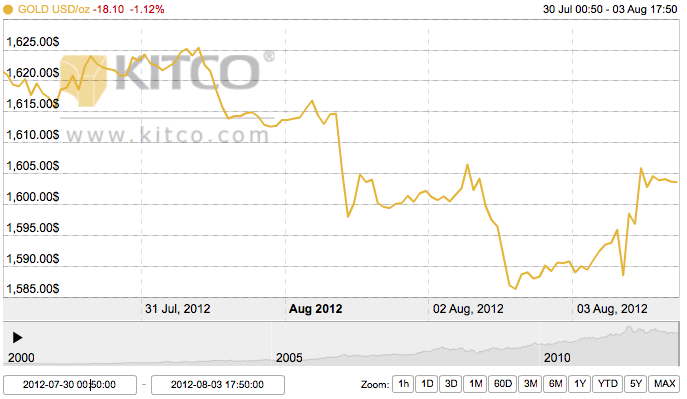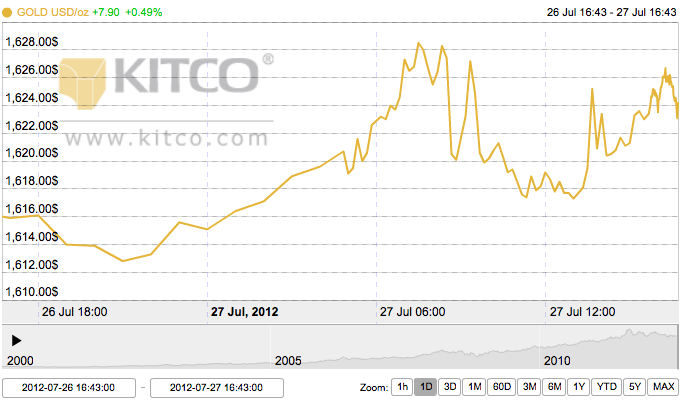Monday Open: $1,621.00
Weekly High: $1,625.40
Weekly Low: $1,586.30
Friday Close: $1,603.60
This week gold opened at a 6-week high, trailing off gains from last week’s European refinancing, and though the price of gold dipped lower as the week progressed, it still managed to close above the $1,600 mark. After last week’s 2.5% price jump due to news that the European Central Bank is prepared to give the economy a boost by printing more money (which will devalue the euro and send people to a safe haven in gold), Monday opened high but sank on Tuesday as many investors decided to opt out of gold and leave the market with the gains just made.
U.S. unemployment and job loss data was bleak early in the week, buffering gold losses, and the Fed gave an uneventful public address on Wednesday, which again confirmed no economic easing, though it did acknowledge economic sluggishness. Still, gold bulls are hopeful that the coming weeks will finally show some economic easing from the Federal Reserve.
By Thursday, gold had been on a 4-day downturn as both the U.S. and the Eurozone disappointed with a lack of concrete economic policy. Contrary to expectations, European Central Bank president Mario Draghi did not announce any monetary policy or interest rate changes. He addressed the public to say that any government bond buying wouldn’t occur until September, and only on certain conditions. Thursday dropped down to around $1,585 — $30 down from Monday.
“It appears that central banks now need more economic data for them to come out with more aggressive actions, and that’s disappointing for gold investors,” Phillip Streible said on the matter. He is the senior commodities broker at R.J. O’Brien, a futures brokerage.
Yet, gold rose a percentage point on Friday as the dollar buckled, more negative unemployment data rolled in, and investors once again began betting on Fed easing. This kept the yellow metal afloat above the $1,600 mark; although, the beginning of the week marked a 6-week high, the end of the week marked the biggest weekly drop in prices in the same time frame. Gold is still trapped in the $1,525 to $1,675 trading range, a long way from the year’s high of $1,781 in March, held captive mainly by the ambiguous remarks made on economic policy by Fed and ECB chairmen.

